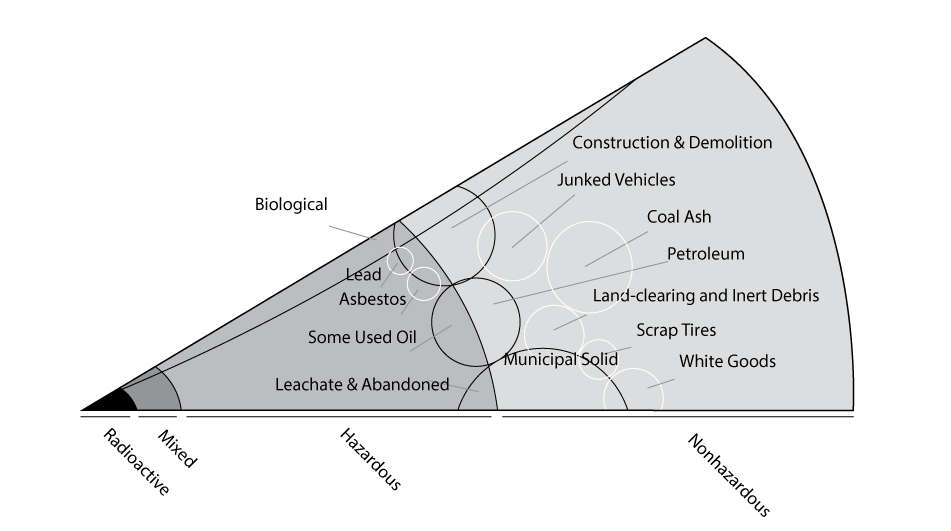Municipal solid waste
One of the most important categories of solid waste, as shown on my waste map, is “municipal solid waste” (often abbreviated as “MSW”). This is the waste that comes from households, the “trash” you take to the curb (and that your parents may have had picked up from behind their house). It’s the waste most people think of when they hear the term “garbage” or, for that matter, “solid waste.” But when you toss out that old paint can with some paint still in it, or that spent battery, or the expired pharmaceuticals, or burned out light bulbs, or many other things in a typical house, the substance you are discarding might well have been “hazardous waste” if it had come straight from the facility that produced it. Why is the same waste substance considered MSW on one hand and “hazardous waste” on the other? The care (and thus the costs) with which these two waste streams are disposed are quite different. This is the way environmental laws work: by drawing lines that may make sense mostly in a certain political context, the context of “what can get passed by Congress or the General Assembly.”
Read More →
